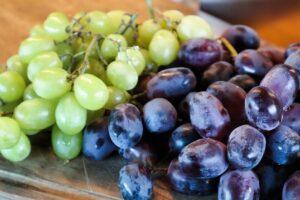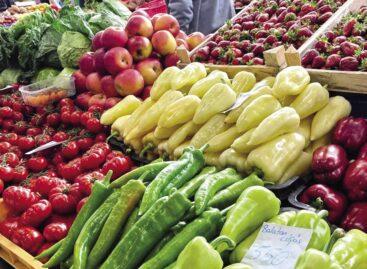The juicy Hungarian table grapes are already ripe
The tasty domestic dessert grapes will soon be available in the markets. According to the joint overview of the National Chamber of Agriculture and the Hungarian Vegetable and Fruit Association (FruitVeb), around 10-12 thousand tons of table grapes intended for fresh market consumption are put on the market every year, but the domestic consumption is higher. Thus, imports have increased significantly in recent years, mainly Italian, and smaller amounts of Argentine, Brazilian, Chilean, South African or Peruvian table grapes can be found on store shelves. Domestic fruit can be found mainly in markets or greengrocers.

(Photo: Pixabay)
One of the most popular fruits of the late summer and autumn period is table grapes. Thanks to its special content values, it is no coincidence that it is one of the most popular and most consumed fruits in the world. In Hungary, it appears on the markets in mid-to-late August with the domestic dessert grapes, with early ripening varieties.
Currently, there are 43 state-certified dessert grape varieties and 2 dessert grape clones in the National Register of Varieties
In addition, many varieties classified as wine grapes are also in demand as table grapes. Thanks to the variety of varieties, we get a continuous ripening sequence, so we can eat the fruit from July to October. Among the early-ripening ones, the most popular are Csabagyöngye, Queen of the Vineyard Muscat, Saszlák (chasselas), among the middle-ripening ones are the Pölöskei Muscat, Attila, Pannonia Kincse, and among the late-ripening ones are the Hamburg Muscat, Afuz Ali, and Moldova. From a market point of view, table grape varieties are grouped according to their color: white, blue, red, as well as their berry size and shape (round, oblong), according to their cluster size (based on their weight), and we distinguish between seeded and seedless varieties. The latter have been increasingly popular among buyers and consumers in recent years.
In our country, table grapes are grown on about 371 hectares this year
The three most important production areas are Bács-Kiskun county (142 hectares), Heves county (62 hectares) and Tolna county (46 hectares). At the same time, a larger quantity of dual-use varieties classified as wine grapes, but also suitable for fresh consumption, is used for food purposes. Thus, the vineyard area used for food production amounts to approximately 900-1,000 hectares per year. The amount of fresh table grapes placed on the market is around 10,000 to 12,000 tons per year. The production area has not changed in recent years, the reason for this is that the cultivation of table grapes is a particularly capital and investment-intensive culture, requiring a very high level of expertise, precision and attention, and is also significantly exposed to weather risks. At the same time, the demand is significant: for 20 years, the demand for high-quality dessert grapes has been continuously increasing worldwide.
In Hungary, table grape consumption per capita is 2.5-3 kilograms per year and is constantly increasing
The growing trend is also supported by the import data: in the last four years, the import of dessert grapes practically doubled (after 7,100 tons in 2018, the import was 14,400 tons in 2021). Primarily Italian, with smaller amounts of Argentine, Brazilian, Chilean, South African or Peruvian table grapes on store shelves. Domestic fruit can be found mainly in markets or greengrocers. When buying and harvesting, you should pay attention to the fact that grapes are not an after-ripening fruit: if they are not picked at full ripeness, they will remain unripe. The more ripe it is, the more valuable it is for the body, as it contains more antioxidants. When buying, pay attention to the integrity of the clusters and the firmness of the berries. Grapes can last up to a week in the refrigerator.
NAK
Related news
In alliance with agriculture: MBH Bank responds to the challenges of the market together with professional organizations
MBH Bank has signed a cooperation agreement with the Association…
Read more >Vegetables on the grill – or as a side dish
The barbecue season kicks off with the arrival of really…
Read more >Hungarian strawberries are already ripening, a good harvest is expected this year
Hungarian strawberries are already ripening in heated and unheated foil…
Read more >Related news
The latest issue of Trade magazin is out now!
The digital version is available with more content once again…
Read more >FAO: global food prices increased for the second month in April on a monthly basis
In April, global food prices rose for the second month…
Read more >Beauty care travels at breakneck speed
Beauty care is one of the fastest growing markets in…
Read more >







